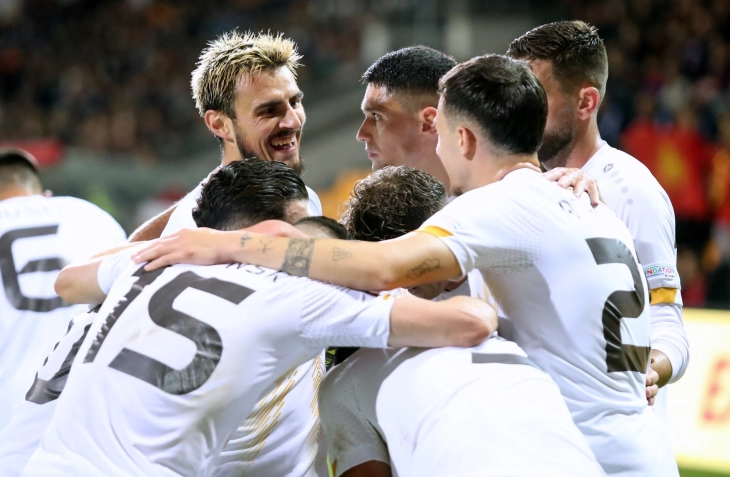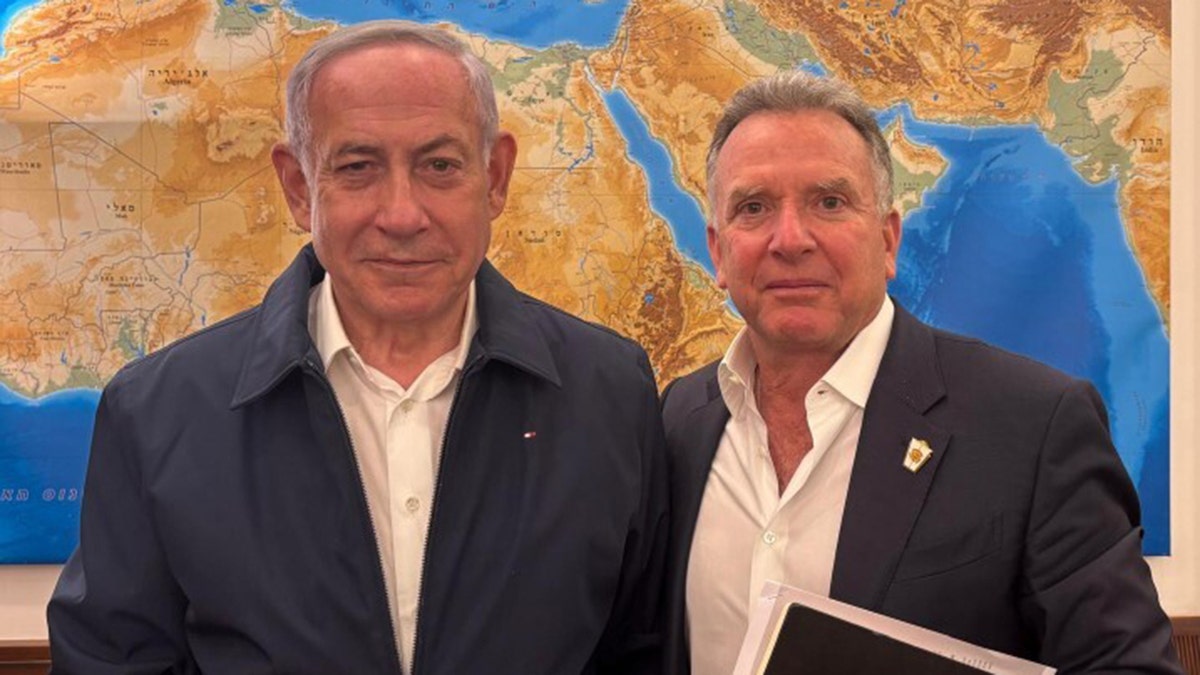The Karate Kid: A Comparative Look At The Film And Its Sequels

Table of Contents
The Original The Karate Kid (1984): A Foundation of Success
The 1984 release of The Karate Kid established a cultural touchstone, a coming-of-age story infused with martial arts action and profound life lessons. Its success rests on several key pillars:
Daniel LaRusso's Journey: From Underdog to Champion
Daniel LaRusso's transformation is the heart of the original film. He starts as a vulnerable, bullied newcomer to California, completely out of his depth.
- His initial vulnerability: Daniel's naivete and lack of self-defense skills make him an easy target for the Cobra Kai gang.
- Mr. Miyagi's mentorship: His unlikely friendship and training under Mr. Miyagi are central to his growth.
- Overcoming adversity: Daniel's perseverance through relentless training and challenging matches showcases his resilience.
- The tournament climax: The final karate tournament is not just about winning a trophy, but about overcoming personal challenges and proving himself.
This classic underdog story, featuring Daniel LaRusso and his Karate training, resonated deeply with audiences, establishing the template for the entire franchise.
The Power of Mr. Miyagi's Mentorship: More Than Just Karate
Mr. Miyagi is far more than just a karate sensei; he's a father figure, a wise mentor, and a teacher of life's valuable lessons.
- Miyagi's unconventional teaching methods: His unique approach to karate training – painting fences, waxing cars – imparts valuable discipline and life skills.
- Life lessons beyond karate: Mr. Miyagi teaches Daniel about patience, perseverance, and respect, going beyond the physical aspects of karate.
- The father-son bond they develop: The film beautifully portrays a deep and meaningful relationship forged through shared experiences and mutual respect.
Mr. Miyagi's mentorship is the emotional core of The Karate Kid, a powerful testament to the impact of a wise and caring teacher.
The Cultural Significance: A Lasting Impact
The Karate Kid transcended its genre, leaving a significant cultural impact.
- Cross-cultural themes: The film explores themes of cultural adaptation and understanding, focusing on Daniel's transition to a new environment.
- Exploring themes of bullying and prejudice: The film tackled the serious issue of bullying, highlighting the consequences of prejudice and intolerance.
- Impact on popular culture: The film's influence on popular culture is undeniable, spawning sequels, a successful TV series (Cobra Kai), and numerous imitations.
Its portrayal of diverse communities and its exploration of universal themes contributed to its enduring appeal.
The Karate Kid Part II (1986): Exploring New Horizons
The Karate Kid Part II expands the universe, taking Daniel and Mr. Miyagi to Okinawa, Japan.
Expansion of the Story and Characters: A New Setting, New Challenges
The sequel introduces a wider scope and new characters, enriching the narrative.
- Travel to Okinawa: The change of scenery provides a fresh perspective and introduces new karate styles.
- The introduction of Kumiko: Kumiko adds a romantic subplot and further exploration of Okinawan culture.
- The exploration of different karate styles: The film showcases different karate styles and philosophies, adding depth to the martial arts aspect.
This expansion of the Karate Kid universe offered a new adventure, though arguably deviated from the original's more contained narrative.
Continued Mentorship and Growth: A Deeper Bond
The relationship between Daniel and Mr. Miyagi continues to evolve, strengthening their bond.
- Deepening bond: The shared experiences in Okinawa further deepen their father-son-like connection.
- New challenges: Daniel faces new challenges, both physical and emotional, testing his skills and resilience.
- Application of learned skills in a new culture: Daniel applies his karate skills and life lessons in a new cultural context.
Mr. Miyagi's mentorship remains central, guiding Daniel through new obstacles and cultural differences.
A Shift in Tone: From Schoolyard Brawl to Cultural Exploration
The Karate Kid Part II adopts a different tone compared to the original.
- More focus on family and cultural differences: Family relationships and cultural exploration take center stage.
- A less straightforward conflict: The antagonist is less clearly defined, shifting focus from a straightforward schoolyard rivalry to broader conflicts.
This shift in tone, while introducing new elements, ultimately altered the core dynamic established in the first film.
The Karate Kid Part III (1989) and Beyond: Analyzing Subsequent Installments
The later sequels in the Karate Kid franchise gradually strayed from the original's formula.
The Rise of Terry Silver: A More Ruthless Antagonist
The Karate Kid Part III introduces Terry Silver, a more menacing and ruthless adversary.
- Terry Silver's manipulative tactics: Silver employs more sophisticated and insidious tactics, escalating the conflict.
- The escalation of conflict: The rivalry reaches a new level of intensity and brutality.
- The darker tone: The film adopts a more somber and violent tone compared to its predecessors.
Assessing the Franchise's Trajectory: A Gradual Decline?
The subsequent sequels demonstrated a decline in overall quality, often criticized for formulaic storytelling.
- Decreasing quality: Many critics and fans agree that the quality of the sequels decreased with each installment.
- Formulaic storytelling: The sequels often relied on repetitive plot devices and lacked the originality of the first film.
- Departure from the original's charm: The sequels often lost the charm and heart that made the original so special.
The Cobra Kai Series: A Modern Reimagining
The Cobra Kai series successfully revived the Karate Kid franchise, reimagining the story for a modern audience.
- Revisiting characters: The series brings back beloved characters from the original films, exploring their adult lives.
- Exploring adult lives: The series delves into the complexities and consequences of the characters' past actions.
- New perspectives: Cobra Kai offers new perspectives and explores the moral ambiguities of the characters and their actions.
This modern continuation successfully breathed new life into the franchise, capitalizing on nostalgia while exploring mature themes.
Conclusion
This comparative analysis of The Karate Kid and its sequels reveals the enduring appeal of the original film, largely due to its compelling characters, strong mentorship theme, and effective storytelling. While the sequels attempted to build on this success, they often fell short, lacking the charm and originality of the first installment. However, the enduring legacy of The Karate Kid lives on, most notably with the Cobra Kai series which successfully reimagines the franchise for a modern audience. Whether you're a longtime fan revisiting your favorite films or a newcomer eager to discover the world of The Karate Kid, this exploration should provide a deeper appreciation for the entire saga.
Call to Action: Delve deeper into the world of The Karate Kid! Watch the films again, compare and contrast the different narratives, and share your thoughts on which installment is your favorite! Explore the Cobra Kai series for a contemporary take on the timeless story.

Featured Posts
-
 Ligata Na Natsii Makedoni A I Potentsi Alnite Protivnitsi
May 23, 2025
Ligata Na Natsii Makedoni A I Potentsi Alnite Protivnitsi
May 23, 2025 -
 Big Rig Rock Report 3 12 Your Comprehensive Rock 101 Resource
May 23, 2025
Big Rig Rock Report 3 12 Your Comprehensive Rock 101 Resource
May 23, 2025 -
 The One Percent Budget Showdown Clintons Veto Threats Analyzed
May 23, 2025
The One Percent Budget Showdown Clintons Veto Threats Analyzed
May 23, 2025 -
 Serious Landslide Threatens Swiss Mountain Community
May 23, 2025
Serious Landslide Threatens Swiss Mountain Community
May 23, 2025 -
 C Beebies Bedtime Stories A Parents Guide To Calming Bedtime Routines
May 23, 2025
C Beebies Bedtime Stories A Parents Guide To Calming Bedtime Routines
May 23, 2025
Latest Posts
-
 Emissary Claims Hamas Deception The Witkoff Story
May 23, 2025
Emissary Claims Hamas Deception The Witkoff Story
May 23, 2025 -
 Hamas Deception Witkoff The Emissary Speaks Out
May 23, 2025
Hamas Deception Witkoff The Emissary Speaks Out
May 23, 2025 -
 Witkoff Alleges Hamas Deception A Key Emissarys Story
May 23, 2025
Witkoff Alleges Hamas Deception A Key Emissarys Story
May 23, 2025 -
 Witkoffs Claim Duped By Hamas Emissary Reveals Allegation
May 23, 2025
Witkoffs Claim Duped By Hamas Emissary Reveals Allegation
May 23, 2025 -
 Emissarys Account Was Witkoff Duped By Hamas
May 23, 2025
Emissarys Account Was Witkoff Duped By Hamas
May 23, 2025
